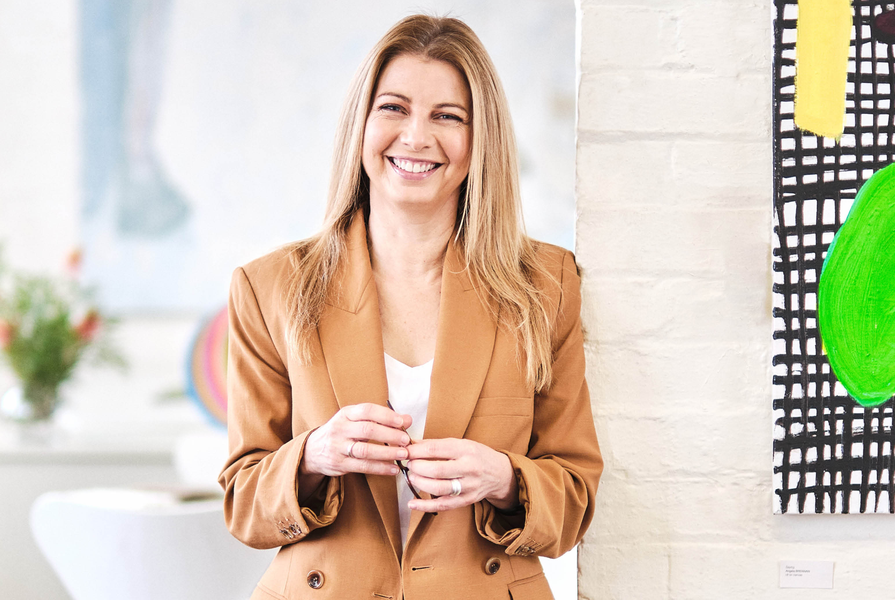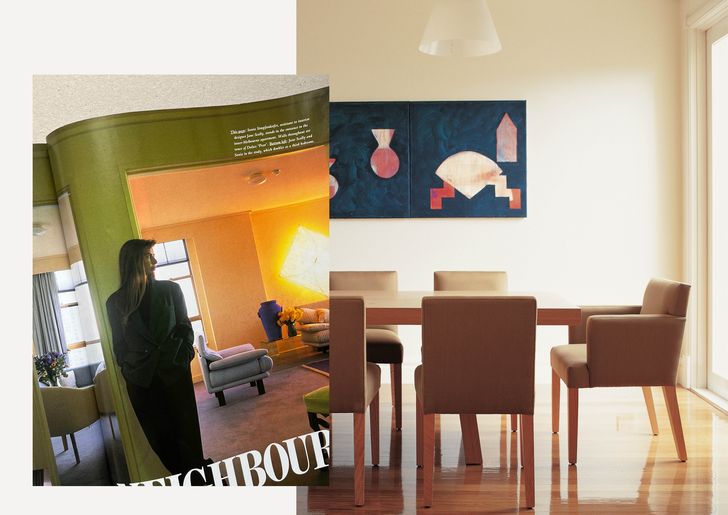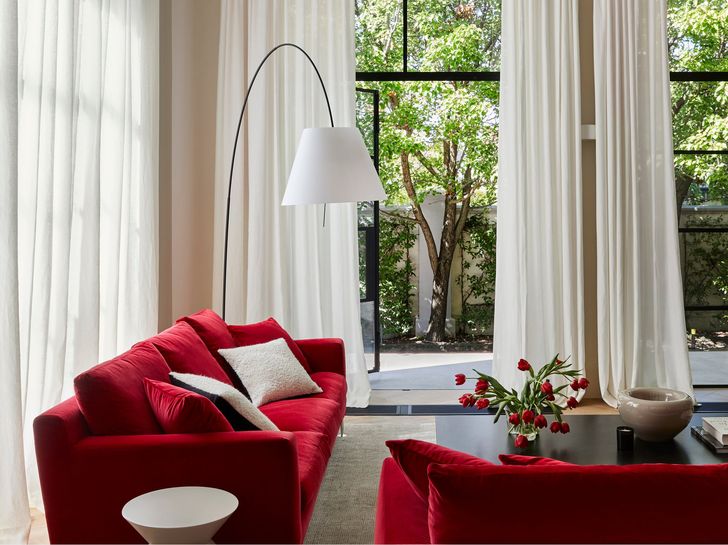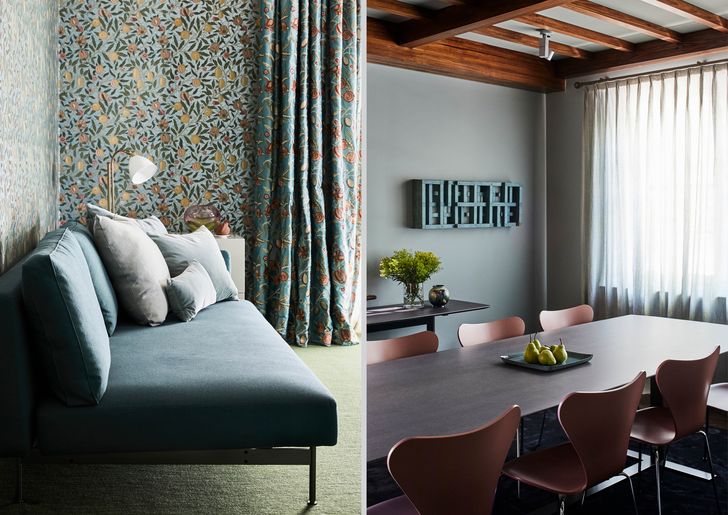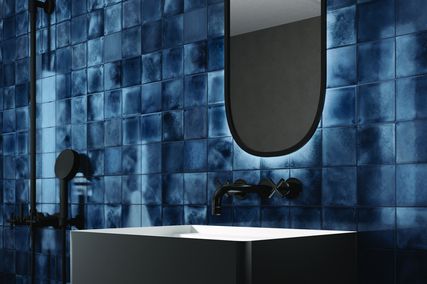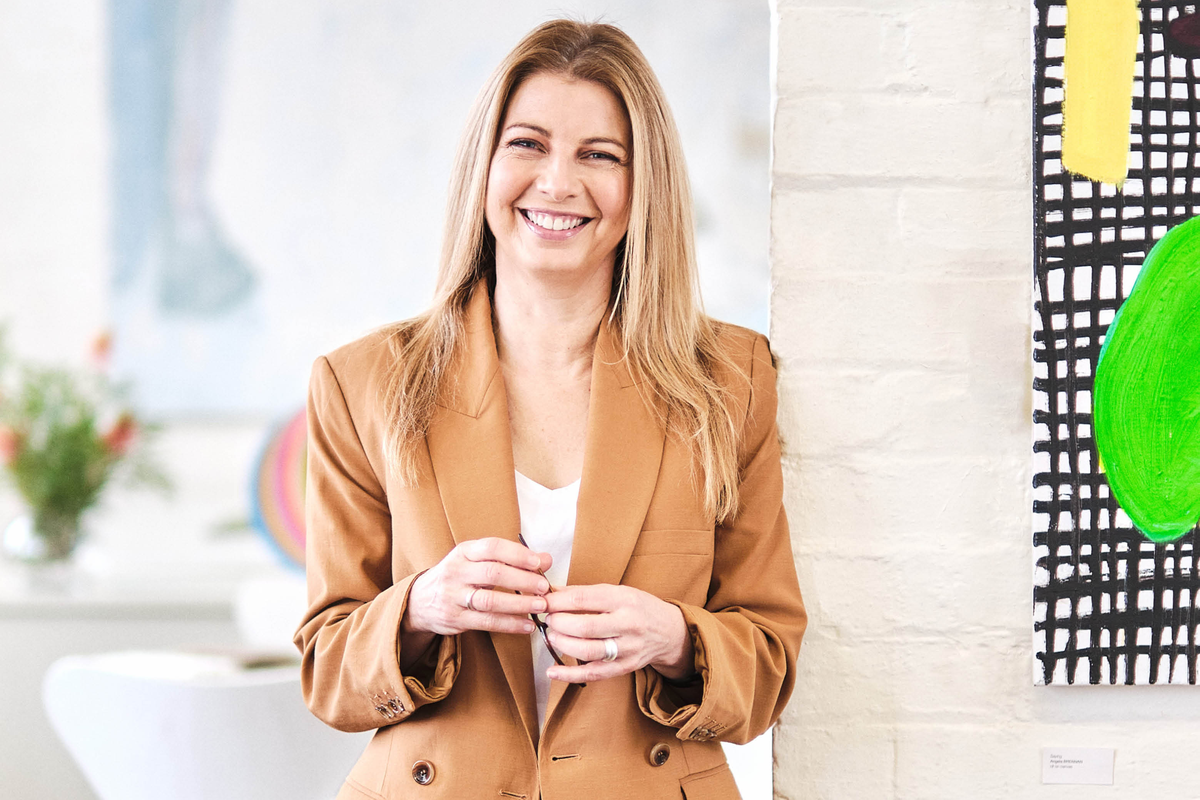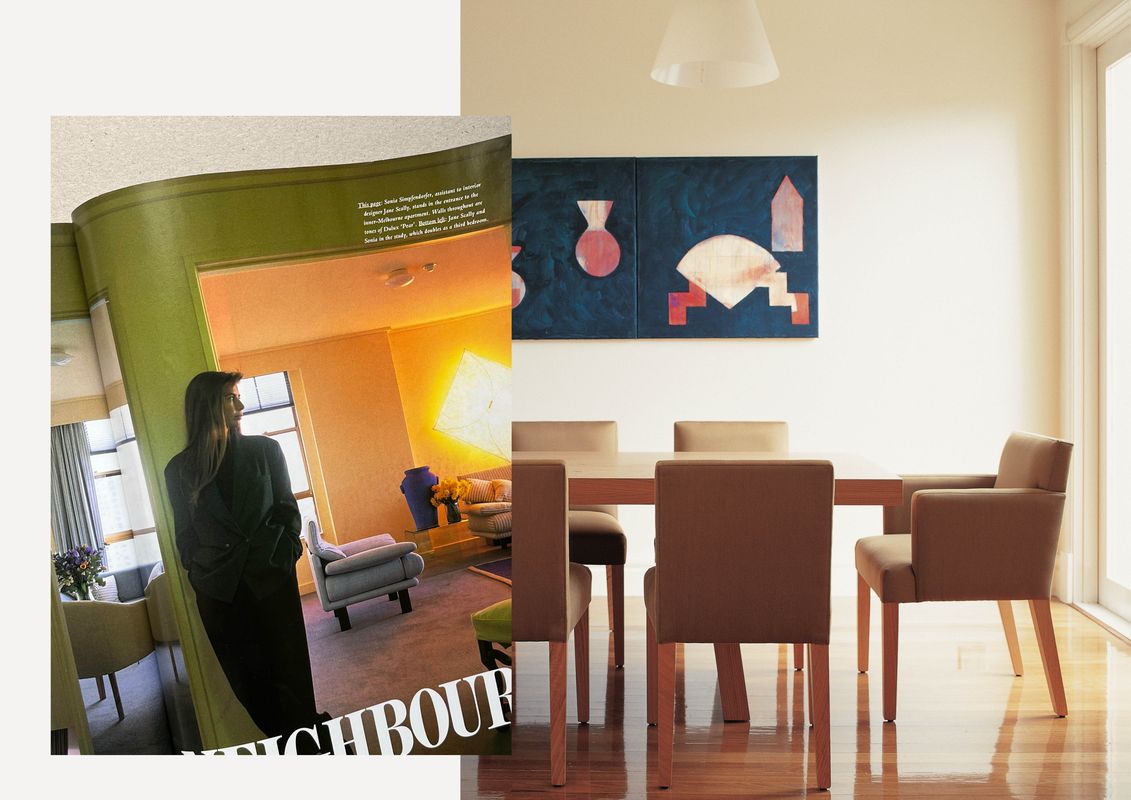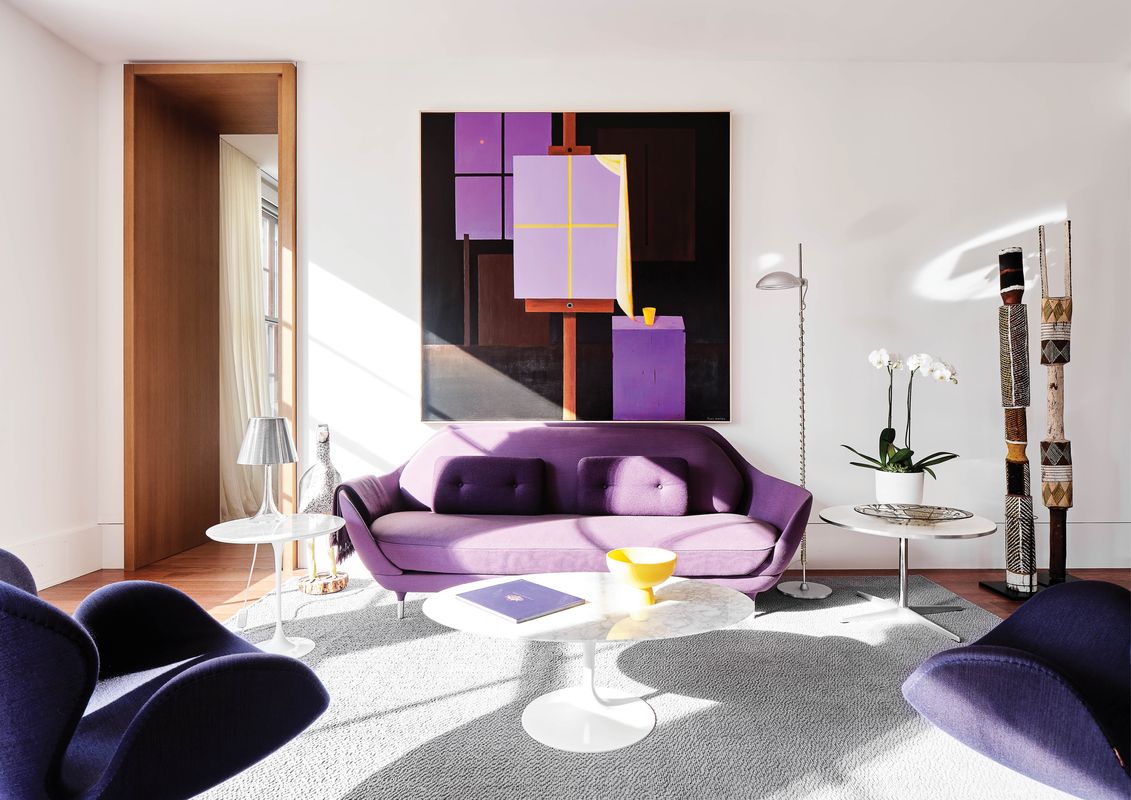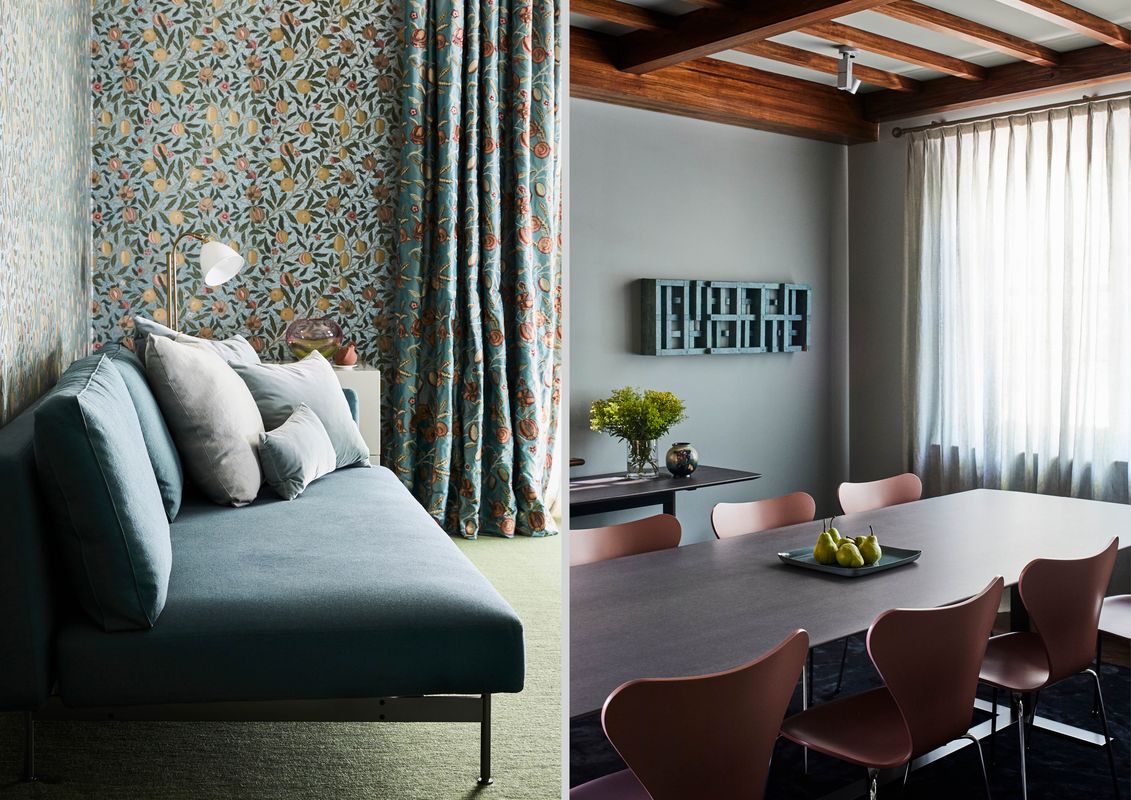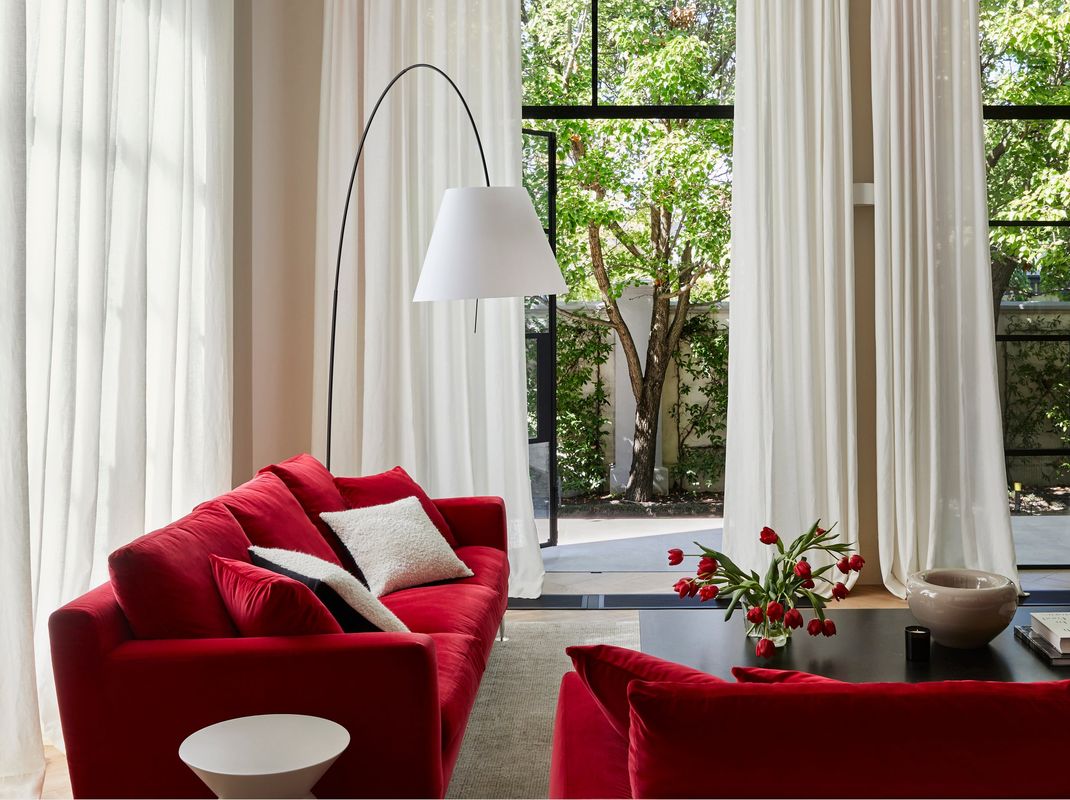“I grew up in the country in South Australia,” says Sonia Simpfendorfer. “My mother was an artist: she cared about what our food looked like, how it was presented. She was a big gardener and a painter and wrote poetry. She cared about the way things looked, which wasn’t typical for country women of her era. I grew up with that, but I didn’t know that there was a profession called interior design until I was in my last years of high school.”
Simpfendorfer studied at what was then the South Australian Institute of Technology (SAIT), where she enrolled in 1986. “Minimalism was a big thing then, as was the Memphis Group, so we were grappling with these two polar extremes in design,” she says.
Around 1989, activity in Adelaide was beginning to slow with the arrival of the economic downturn, and with that, Simpfendorfer packed her bags and decided to move to Melbourne. “I think I had my 21st birthday the night before I got on the train,” she said. “I went to Bloomfield Tremayne, gave them my resume with no experience, and got a job with a woman named Jane Scally.”
Sonia Simpfendorfer photographed by Earl Carter for Belle Magazine, 1991.
Image: Supplied
The late Jane Scally had been the residential director at Nexus Designs for a number of years before branching out on her own. A legend in the industry, she was renowned for her exceptional eye and her ability to harmonise contrasting materials. Her projects covered many of the 1930s Marcus Martin houses around Toorak and South Yarra, which in turn became Simpfendorfer’s initiation into the world of interior design.
“Jane was brought up from the Merchant Builders background – the same era as Robin Boyd. Everything was brushbox parquetry floors and speckled granite benchtops,” says Simpfendorfer. “Jane taught me respect for the architecture and understanding of the period. Her philosophy was about the simplest kinds of possible response: the smallest number of materials, the least amount of finishes, so that you get a real flow and continuity throughout a house. It was a kind of quiet design.”
From Scally, Simpfendorfer learnt the enduring nature of good design that transcends trends and fancies. “The aim is always to have things that last for a long time. I think if I went back to some of those earlier projects, they’d still hold up today, because the foundation was very good,” she said.
Fast forward 30 years, and Simpfendorfer’s latest projects still uphold the values Scally instilled in her as a fledgling designer. Cardinal House, a recent reworking of an old Victorian in Melbourne’s affluent suburb of Kew, reimagines an 1890s home for contemporary living, responding to the clients’ interests while retaining the home’s classical references.
Cardinal house in Kew by Nexus Designs.
Image: Lillie Thompson
“We replanned the interior to really respond to the clients’ needs and to create a greater feeling of connection between the indoors and outdoors,” says Simpfendorfer. “We brought finishes through from the front of the house to the back so there’s this absolute seamlessness from end-to-end. The joinery is very lofty, the proportions are still beautiful, and the quality of light is just extraordinary.”
The resultant home is deeply idiosyncratic, fine-tuned to the specificities of its inhabitants. “Our clients love to cook and entertain, but then sometimes it’s just the two of them. It’s a house that it kind of expands and contracts accordingly,” says Simpfendorfer.
“It’s so clearly theirs but beyond what they could have ever conceived in their own minds,” she says. “When a designer listens to a client, it gives them something that’s better than they could have ever imagined, but that still feels true to them – it doesn’t take them into a space that’s uncomfortable.”
Simpfendorfer’s process today is informed by a scrupulous examination of space and context, in what she refers to as a “sense of place exploration”.
“I’ll use the example of a project we’re doing in Shelter Island, New York. We conducted an entire background research project before we actually put pen to paper for what the interior could be. Walt Whitman, for instance, wrote a lot of poetry when he was there,” she explains.
“‘How do the seasons affect it?’ ‘What have people written about it?’ ‘What do you eat there?’ These are the sorts of questions we ask. It’s about getting a feeling for being there so we can give an authentic response that makes sense.”
Tribeca Loft, Manhattan, New York, by Nexus Designs.
Image: Van Sarki
In a beautiful instance of serendipity, Simpfendorfer is now working on a Marcus Martin house more than 30 years on from her first project. Returning to this genus of home that defined her early career, but with the benefit of refined process and a honed eye, provided Simpfendorfer with an opportunity for reflection on her evolution as a designer.
“This house had a really hard, cold renovation done to it before our clients bought it. Many of the details were stripped and it became this huge, but very closed-in house,” she says.
“When we replanned the interior, as we were opening up doorways and getting the proportions of the rooms right according to what we were looking for, we realised we were reinstating the original features Marcus Martin had in place that had been mislaid over renovations,” she said.
“It was a complete coincidence, but I guess it shows that our approach is very sympathetic to the architecture and the period. Unfortunately, a lot of the detailing was lost and some of the finishes are no longer original, but what we did was make the house make sense again. I love this idea that the envelope now is exactly how it should have been.”
Jewel Box, South Yarra, by Nexus Designs.
Image: James Geer
Simpfendorfer’s career has gone from strength to strength, earning her a reputation for meticulous process and a highly personal, bespoke and enduring design style respected by her clients and peers alike. Today, she’s the director at Nexus Designs, a former workplace of her early mentor Jane Scally, where she is entrusted with continuing the design legacy that has been so synonymous with Australian vernacular since 1967. Her advice to new designers?
“I came across this wonderful expression. It is: ‘strong convictions held loosely’. I think that’s a good state of mind to have as a designer, to really know and understand good design and history and be clear about the kind of work that you do, but also be willing to change and bend and absorb new information.
“You can’t just go with the tides of fashion, because that is so unsatisfying. And you can’t be like a rock that doesn’t change, or you’ll become irrelevant.”

